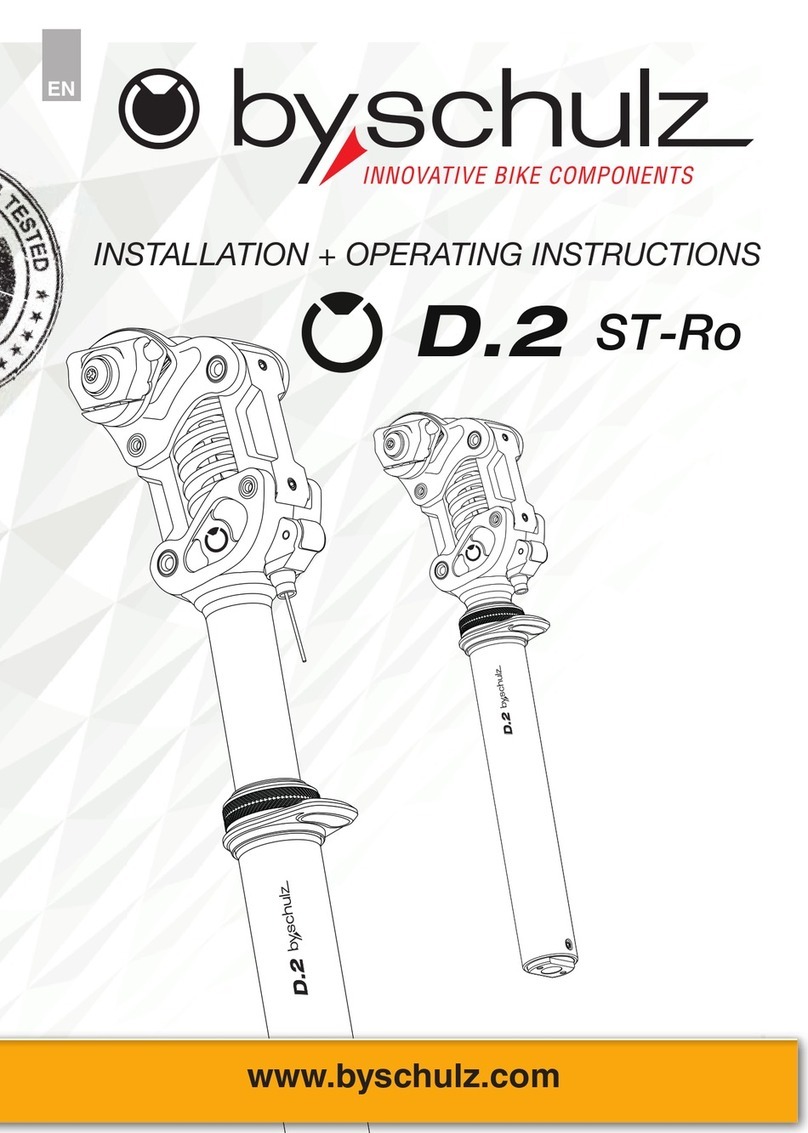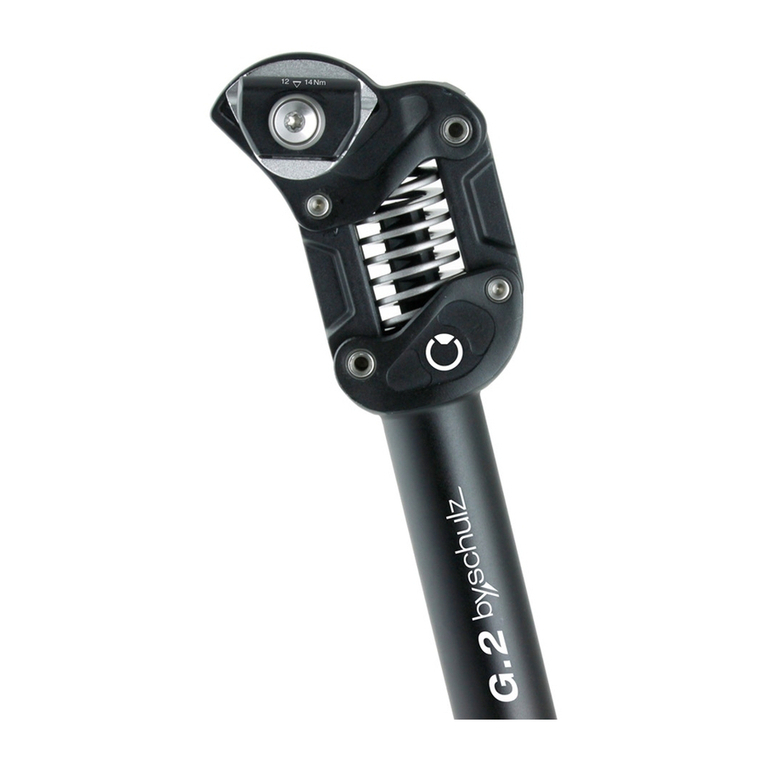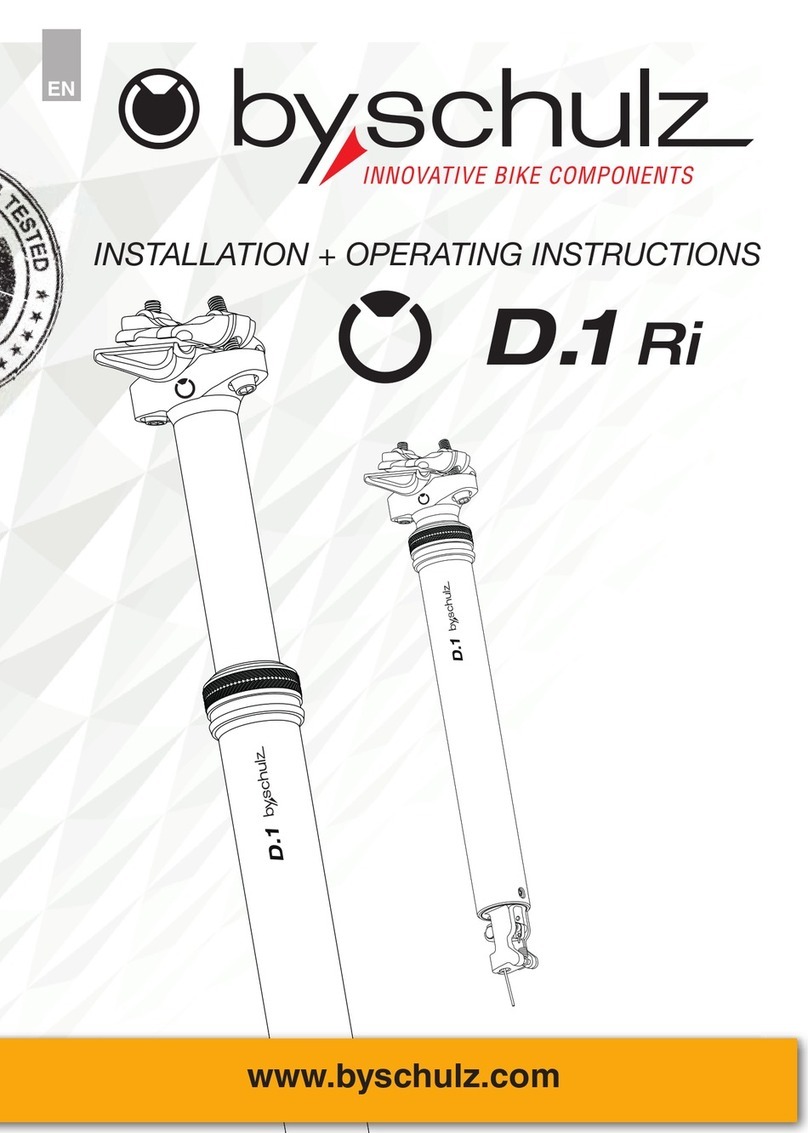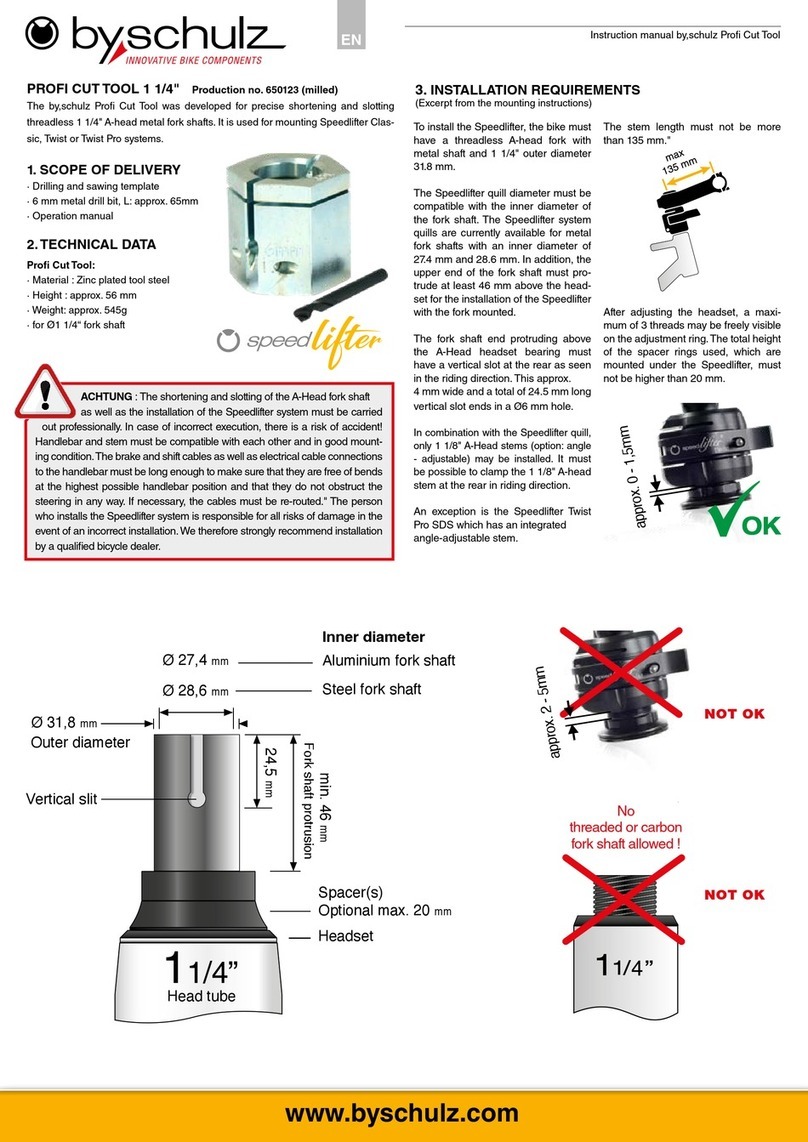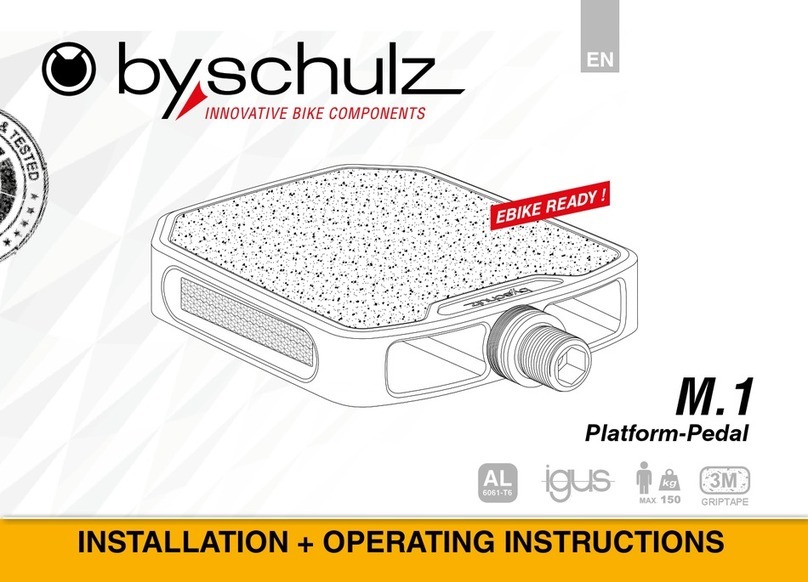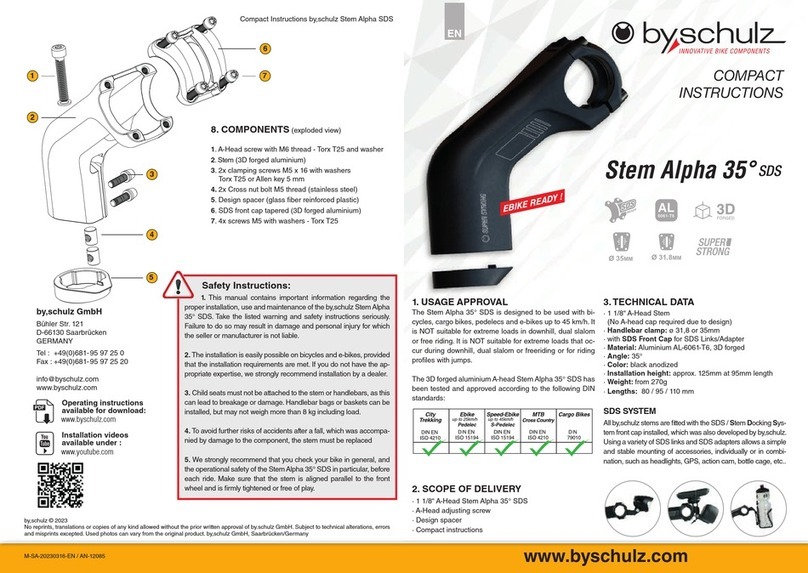
2/20 Installation + Operating Instructions D.2 ST-Ri Seatpost
INTRODUCTION
Thank you for choosing a by,schulz product. Please read
these instructions carefully before assembly and use, and
keep them in a safe place. If you have any further ques-
tions about this product, please contact your dealer.
We wish you a safe ride!
TABLE OF CONTENTS Page
1. Usage approval 02
2. Safety instructions 02
3. Scope of delivery 03
4. Function 03
5. Technical Data 04-05
6. Spring elements 05
7. Seatpost components / Exploded view 06-07
8. Installation requirements 08-09
9. Installation 10-14
9.1 / 9.2 Tools + preparation 10
9.3 Mounting the remote lever 10-11
9.4 Routing the cable 12
9.5 Connecting seatpost + remote lever 12-14
9.6 / 9.7 Saddle installation / adjustments 15
10. Changing the spring element 16-17
11. Operating the seatpost 18
12. Care / Cleaning 18
13. Warranty / Guarantee 19
14. Maintenance / Service card 19
1. USAGE APPROVAL
The adjustable parallelogram suspension by,schulz D.2 ST-
Ri seatpost is for use with bicycles, cargo bikes, pedelecs
and e-bikes up to 45 km / h suitable. It is NOT designed
for extreme loads that occur during downhill, dual slalom
or freeriding, or for riding proles with jumps. The D.2 ST-
Ri seatpost is made of high-strength aluminium, and has
been tested and approved according to the following DIN
standards:
Before the rst ride:
We strongly recommend that you check the roadworthiness
of the bicycle in general, and the operational safety of the
seatpost in particular, before each ride.
First check that the saddle is rmly secured in the saddle
clamp. Also make sure that the seatpost tube is free of
play and rmly connected to the bicycle frame. It must be
clamped in the desired position in such a way that it cannot
be turned or moved in the seat tube. Please note the mini-
mum insertion depth of the seatpost of 100mm.
2. SAFETY INSTRUCTIONS
1. These instructions contain important informa-
tion on the proper assembly, use and maintenance of
the by,schulz D.2 ST-Ri seatpost.Take the listed warning
and safety instructions seriously. Failure to do so may
result in property damage or personal injury, for which
neither the seller nor the manufacturer is liable.
2. Check the installation requirements before assembly.
If you do not have the necessary skills and / or tools, we
strongly recommend having the installation carried out
by a specialist dealer
3. Child seats, trailer couplings or luggage carriers must
not be attached to a D.2 ST-Ri seatpost as this can lead
to breakage or damage.
4. To avoid further risks of accidents after a fall with
damage, the seatpost must be checked and replaced
if necessary.
5. Always use the protective neoprene cover to cover
the spring mechanism if a child seat is mounted behind
the seatpost. Without the cover, there is a risk of injury
to children's hands!
6. The D.2 ST-Ri seatpost is not to be used for trans-
port with car bike racks where the bike is attached to the
saddle. Fastening to the seatpost may only be done as
shown in Fig. 2.1!
7. Clamping systems of mounting stands may only be
attached to the outer seatpost tube below the screw ring,
or to the frame of the bicycle. The inner seatpost tube
and the area of the screw ring are not suitable for this
purpose (Fig. 2.1).
Incorrect attachment can cause damage to the seat-
post, and void the warranty!
Fig. 2.1
